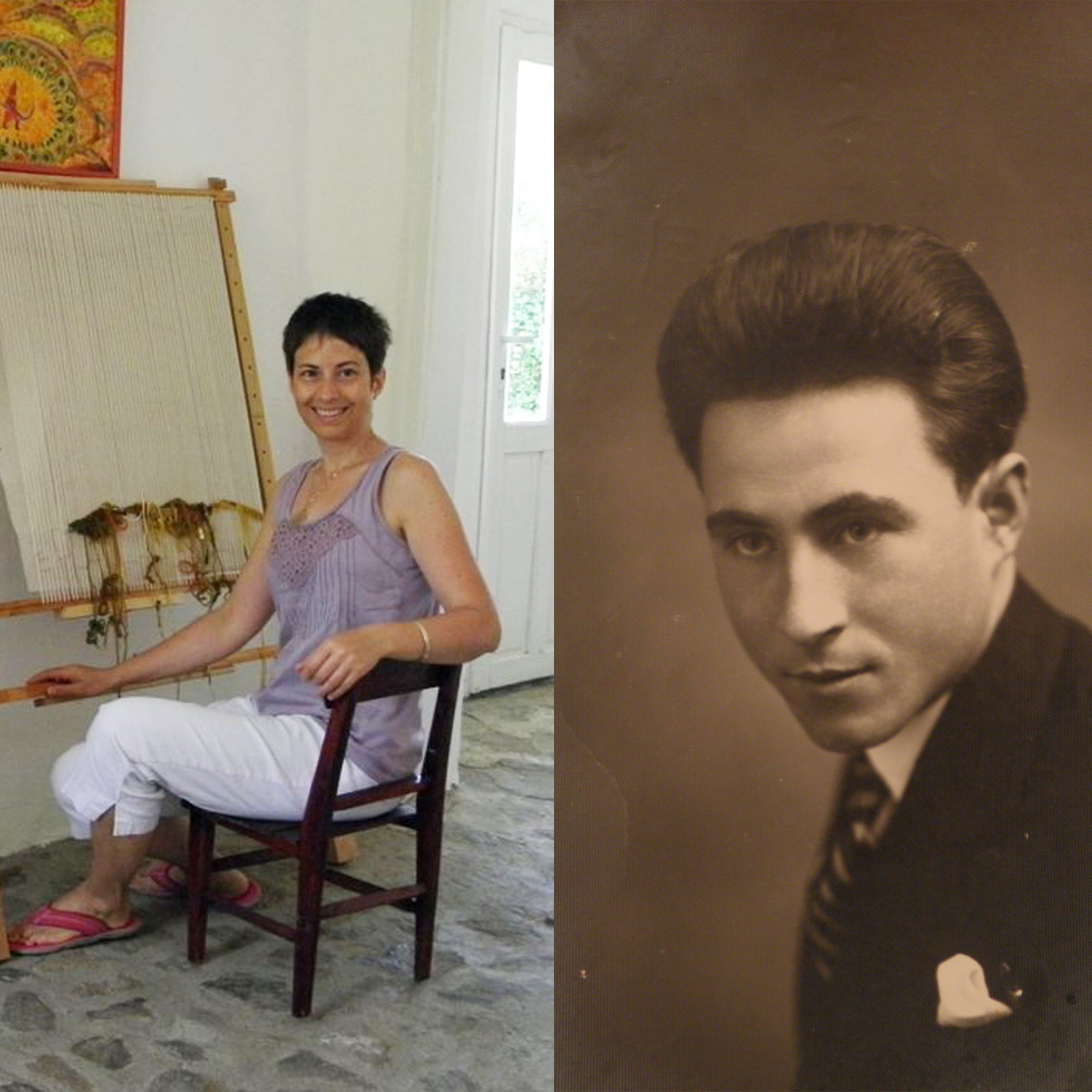Bulgarian Weaving Heritage: From Grandfather to Grandaughter
Silvia Hara weaves tapestries, paints and plays Bulgarian folk music. Her life as an artist came naturally for her as her grandfather was an acclaimed textile designer who inspired her journey. You can learn more about her on her profile, her website and on our sister site, Creative PlaceMakers, where you can zoom in and see the area where she lives.


The story of Assen Haralambov
My grandfather was not only handsome but also very gentle, noble and talented. His name is Assen Haralambov. He was born in 1908 in the town Harmanli, Bulgaria. After graduating from the Textile high school in Sofia, Bulgaria, he was appointed to the “Tungja” Textile factory in the town Yambol. The owner of the factory appreciated his work so much that he sent him to study Textile design in Milano at the expense of the factory.
After that and until his last day, he was invited by many other factories in the country to show the workers how to deal with the new mechanized looms. At the same time, he created patterns of fabrics for rugs, carpets, upholstery etc. He also designed the large curtain of the National Theatre in Sofia. My grandfather worked for all of his life as a designer at the textile factories in Bulgaria. He created patterns of carpets, rugs and fabrics for the textile industry.

This activity was highly precise. I remember sitting next to him on a large table covered with all those special paper sheets with very small quadrate dots which he filled in with different colors until the whole picture was finished. I was very curious and interested in this and he showed me how to do it and would let me make my own designs. I am fortunate to have several of his original patterns and happy to share them with you here.

Assen Haralambov carpet pattern 1 – Bulgaria





My grandfather was well respected in the guild. Years later I visited a textile factory in a small town in the mountain where I could buy yarn and there were still workers who remembered him and said such good words about him.
My tapestries and the yarn I use.
The creation of a unique woven wall-hanging is usually a result of 3 weeks of manual creative work. I use a simple frame loom with cotton warp yarn for a base. I work only with my fingers by passing the threads one by one through the vertical cords.

The materials are of high quality and selected by me in specialized stores and textile factories where the colors are hand-dyed with pigments extracted from various types of plants, fruits and vegetables.
In the past, another source for natural yarns or unspun wool came from old women in mountain villages where many sheep were raised.
Before, as nowadays, such yarns can be found at art and crafts fairs organized in various places around the country. My friends have brought me non dyed carded wool from abroad with diverse inherent colors of the sheep’s fur, which is the most natural product that can be utilized by weavers.
Local textile factories
The last factory where I bought natural yarns was in the town Kostandovo not far from where I live. As seen in the photos below that I took during my visit, they still use the large old fashioned authentic looms.








Example of how a pattern similar to my grandfather’s is used to map out a carpet:



Another interesting story is that this workshop makes carpets for the British royal family. This article shows a commission from King Charles and Camilla along with the challenges of preserving Bulgarian designs due to lack of local orders.
Finally, this blog post has many more photos of the same factory along with details on how it works:
https://www.andrey-andreev.com/en/kostandovo/
I am happy to carry the memory of my grandfather by supporting these local efforts and by making my own work.




